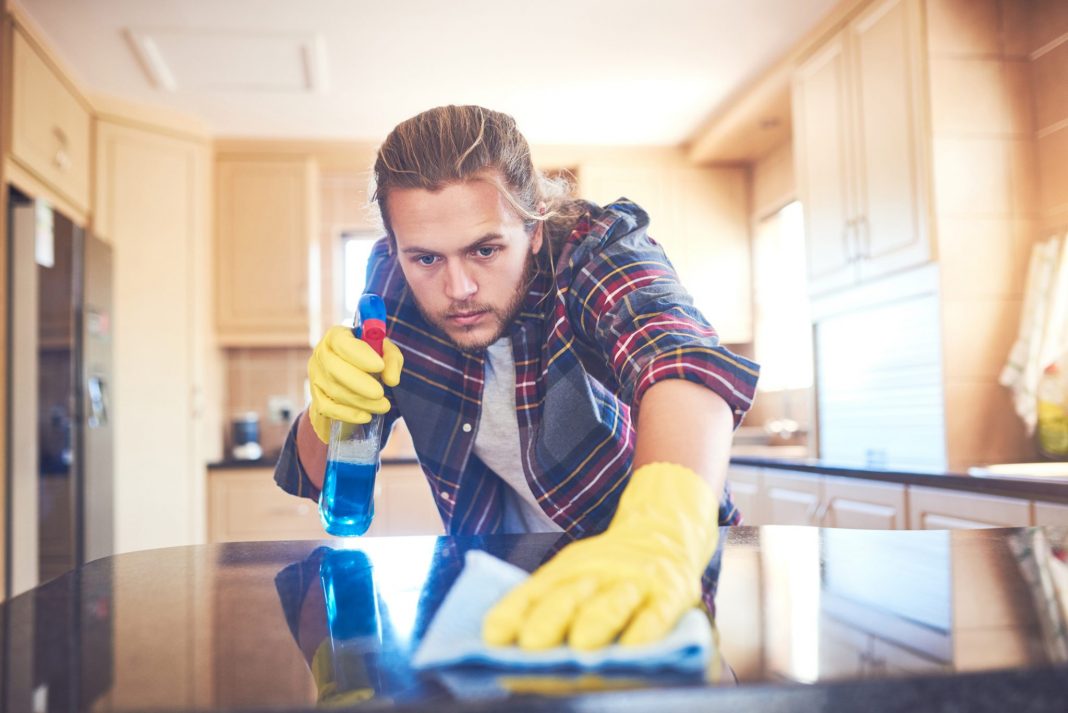AUBURN UNIVERSITY, Ala.—It is likely that nearly every Alabama resident has used bleach, hand sanitizer or another cleaning agent in the past several days. While sanitizing in the kitchen should be a priority all of the time, Janice Hall, an Alabama Extension food safety regional agent, said in times like this, it is especially important.
While Hall works extensively with those in the food service industry, she also encourages food safety at home.
“Whether you are working in a restaurant or cooking at home, there are some things that everyone should know as they are handling food,” Hall said. “People who are considered to be high risk (elderly, preschool age children, and people with compromised immune systems) are at risk of suffering complications if they consume contaminated foods.”
Clean. Sanitize. Disinfect.
If given a choice between soap and water or disinfecting wipes, many people might choose the disinfectant wipes for wiping off cutting boards, knives, bowls and other kitchen tools. However, Hall said this is not the right choice for cleaning kitchen surfaces. Many disinfectant wipes are not labeled for use on food-prep surfaces. It is important to know how to properly clean, sanitize and disinfect items and surfaces.
Clean
Hall said that people should use soap and water to get rid of dirt and visible food particles.
“The water should be at least 110°F for proper cleaning,” Hall said. “Do not use disinfecting wipes, as the label states not to use on surfaces that come in contact with food. If used, people could consume chemical residue, which could lead to other health issues.”
Sanitize
The rule of thumb is to first wash surfaces with soap and water and rinse with clean water. Once done, then people should sanitize all food contact surfaces. A safe sanitizing solution to use on food contact surfaces is 1 to 2 teaspoons of bleach per gallon of water. Proper cleaning and sanitizing will minimize the spread of common germs.
Disinfect
According to the CDC, diluted household bleach solutions, solutions with at least 70 percent alcohol and most common EPA-registered household disinfectants should be sufficient for disinfection.
Hall said it is important to note that bleach solutions for minimizing the spread of the coronavirus are much stronger than the solutions generally used in common disinfectants.
It is important to read the labels of all chemicals and use as directed. Follow all manufacturer’s instructions to ensure proper application on certain surfaces and proper ventilation. Before using, check to verify that the product is not past its expiration date. Unexpired household bleach is effective against coronaviruses when properly diluted. To prepare a bleach solution to kill coronavirus, mix
- 5 tablespoons (or one-third of a cup) bleach per gallon of water
- 4 teaspoons bleach per quart of water
Never mix household bleach with ammonia or any other cleaners.
Before using the disinfectant on food contact surfaces, Hall encourages contacting the company to seek guidance for safe use of their chemicals. The company will help make the safest choice. Contact information is on the label.
Clean Food Prep
The first order of business when preparing a meal is to wash hands thoroughly. Hall said hand washing is a simple way to prevent the spread of germs from one food or surface to another
“Also, animals should not be allowed in the kitchen area as they can also carry bacteria that could get onto food contact surfaces and into the food,” she said. “You never know when Lulu may nip a taste when your back is turned.”
Another important aspect of the meal is preparing the meat. All meat, poultry and fish should be defrosted in the refrigerator. Leaving meats out on the counter to thaw can cause bacteria to grow to numbers that could make someone sick.
“Plan ahead by allowing 24 hours for every 5 pounds of meat you want to thaw,” Hall said. “You can also thaw under running water, but do not use hot water. Water should not be more than 70°F and continuously running on the meat when thawing.”
Sampling Food and Storing Leftovers
“When sampling food, it is important to use a utensil, step away from the food, sample, re-clean and sanitize the utensil then wash your hands,” Hall said. “If hands are not washed between sampling, someone could be eating your saliva droplets.”
Leftovers are always a big hit, especially in times when families are working to stretch groceries for an extended period of time. Properly storing them can help keep them fresh and edible for a longer time period.
Hall said leftovers should be cooled down before placing into the refrigerator.
“If foods are left out on the counter for more than two hours, bacteria can grow to levels that can make someone sick,” she said. “You can use ice water to cool down foods before storing.”
To do this, simply place the food into a container (stainless steel is a better conductor of cold) and sit it into a sink or container of ice water. To cool faster, stir the food items to distribute the cooler temperature.
More Information
Find more food safety or meal preparation information on www.aces.edu.

















